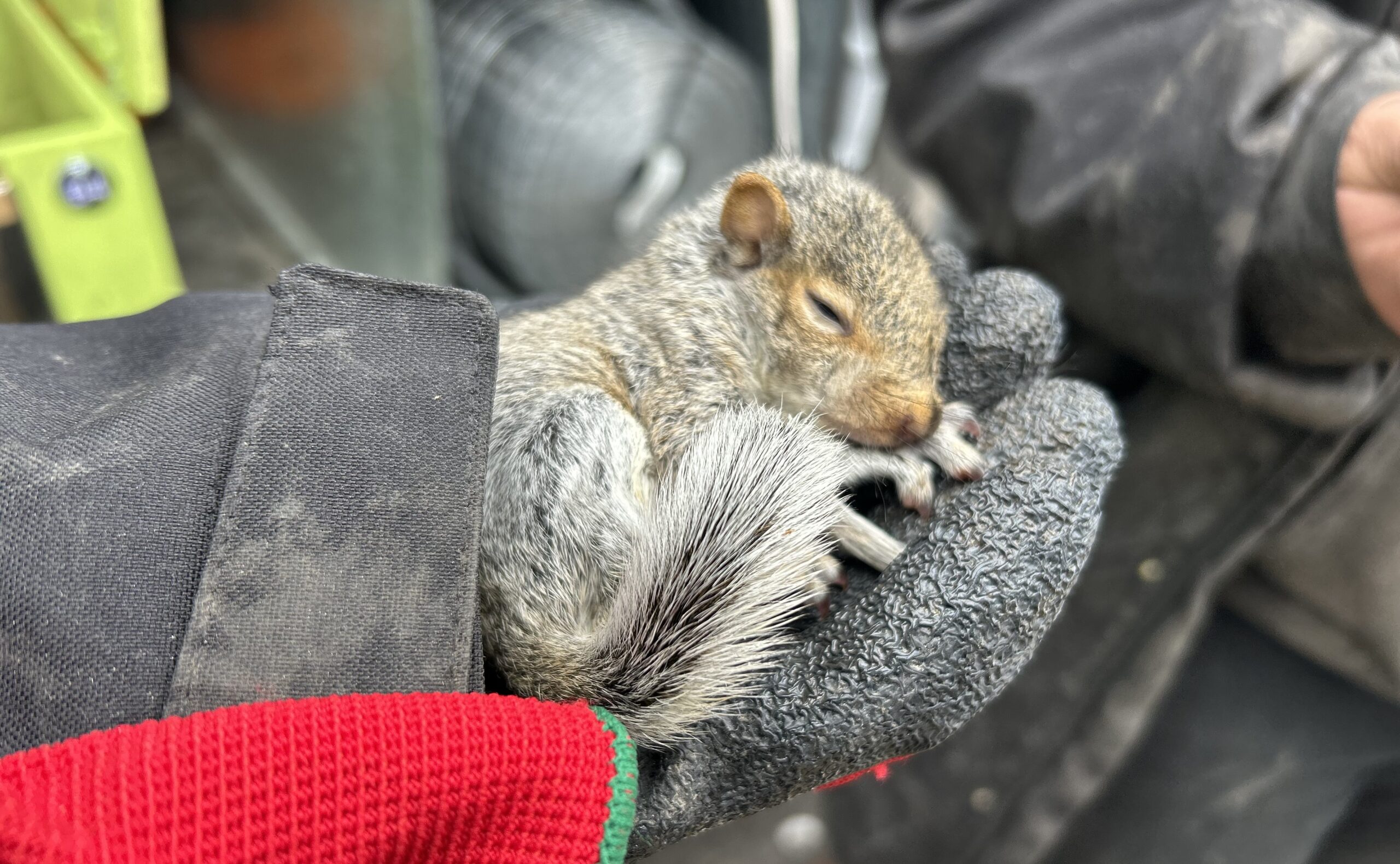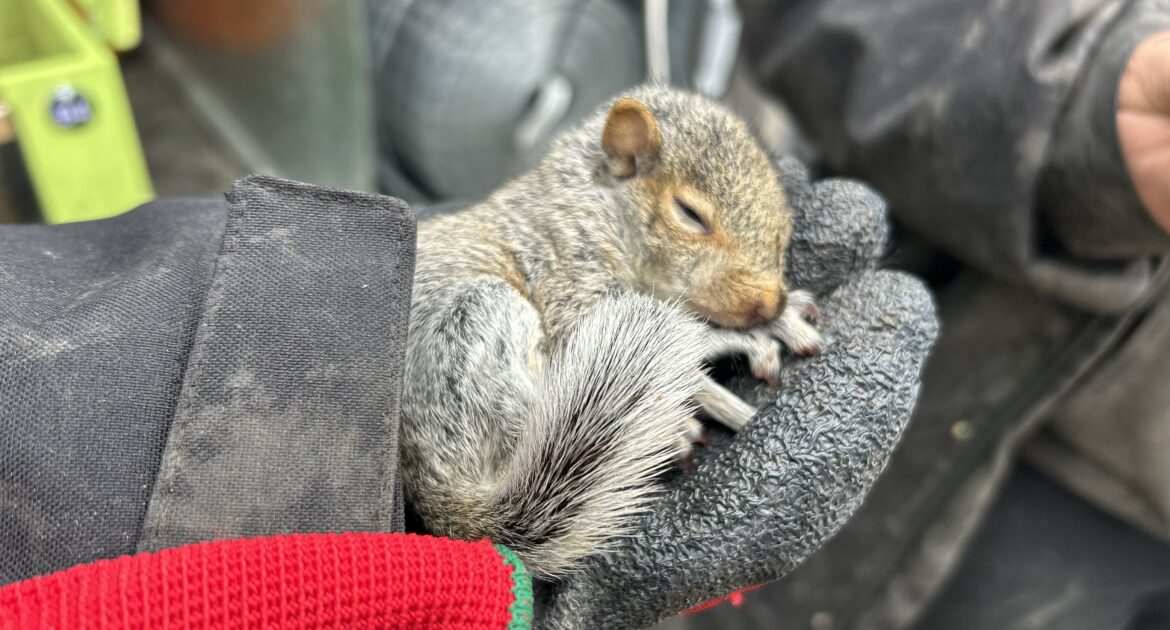Squirrels are fascinating little creatures, and understanding their seasonal activity patterns can be a game-changer for protecting your home. Whether you’re in the heart of a busy city like Upper Arlington or a quiet suburban neighborhood, squirrels follow predictable habits. From their frantic scurrying during the day to their constant nesting in colder months, these furry visitors are always on the move.
Knowing when squirrels are most active can help you spot potential problems early and keep your property safe. In this guide, we’ll break down their activity patterns throughout the year, giving you clear insights into their seasonal behavior and how to stay one step ahead.
Squirrel Behavior and Activity Times
Squirrels are busiest during the day, especially in the early morning and late afternoon, when they’re out foraging for food. Their activity peaks in spring and fall as they gather supplies and build nests to prepare for colder months. During spring, you might notice them busy with nesting, while in fall, they’re hustling to stock up for winter.
Even in winter, squirrels don’t hibernate. They stay active, venturing out on milder days to replenish their food stores. If outdoor shelters like tree hollows aren’t enough, they may seek warmth indoors, so it’s a good time for homeowners to stay alert for signs of unwanted visitors.
In summer, activity slows down slightly as squirrels conserve energy during hot days and take advantage of abundant food supplies. However, they’re still preparing for the future by stashing food in secret spots. Knowing these seasonal habits can help you spot squirrel activity and take steps to keep them out of your home.
Squirrel Activity Patterns by Season
Squirrels are a common sight in urban areas like Upper Arlington, and their behavior changes with the seasons. These adaptable creatures adjust their activity patterns based on environmental conditions, making them fascinating to observe year-round.
- In spring, mother squirrels are busy preparing for their first litter, typically born between February and April. They gather twigs, leaves, and other materials to build secure, insulated nests for their young.
- Summer brings drier conditions, and squirrels take advantage of longer daylight hours to scout for food and maintain their nests.
- By late summer and into fall, their activity intensifies as they prepare for winter. Autumn is their busiest time, with squirrels hoarding nuts and seeds in hidden caches to ensure they have enough food for the colder months.
- In winter, squirrels spend more time indoors to stay warm, often seeking insulated spaces that can sometimes bring them closer to homes. On warmer winter days, they leave their dens to restock their food supplies, making them less visible but no less active.
Understanding these seasonal behaviors not only helps you appreciate these industrious creatures but also reminds homeowners to stay mindful of potential nesting or food storage activity around their properties, especially as the seasons change.
The Importance of Being Aware
Squirrels may seem like harmless backyard visitors, but understanding their behavior is crucial for homeowners. Being aware of their activity can help you catch early signs of intrusion, like scratching sounds in your attic or walls, droppings, chewed wires, or nests. Recognizing these clues early allows you to take action before small issues become costly problems.
- Early detection helps prevent damage to your home.
- Squirrels are more likely to invade during colder months, so securing entry points ahead of time is key.
- Softer materials like wood or vinyl are easy for squirrels to chew through, creating vulnerabilities.
- Reinforcing weak areas reduces the risk of infestations during peak nesting seasons.
By staying attuned to squirrels’ seasonal patterns, you can better protect your property and surroundings. From burying food in gardens to gnawing on electrical wiring, their activity poses risks that can be managed with proper preparation and awareness. Taking a proactive approach ensures your home stays safe and damage-free year-round.
Proactive Home Protection
For homeowners, taking proactive steps can greatly reduce the chances of squirrels finding their way indoors. Sealing up potential entry points like chimneys, vents, or gaps in roofs is one of the most effective strategies. Trimming overhanging branches or nearby tree limbs can also help stop squirrels from accessing your roof, a common entry route.
Staying aware of seasonal changes is just as important. Squirrels are especially active during certain times of the year, like fall, when they prepare for nesting. Regularly inspecting attics and storage areas during these periods can help you spot early signs of activity, such as nests or chewing damage, and address them before they escalate.
At Skedaddle, we understand squirrel behavior and offer the safest, most reliable solution for dealing with them. Our trained technicians use safe, humane methods to remove squirrels while preventing future issues. We focus on identifying vulnerabilities in your home, securing weak areas, and providing tailored solutions to keep squirrels out for good.
With Skedaddle, you can trust us to protect your home and give you peace of mind knowing it’s safe, secure, and free of unwanted guests.
Protect Your Home Today
By learning when squirrels are most active, homeowners can better anticipate and address potential risks to their properties. Whether it’s during peak fall activity or subtle winter intrusions, being aware of their habits brings significant advantages. Homeowners in areas like Upper Arlington are especially likely to encounter these challenges, given the abundance of wildlife in suburban settings.
If you’ve started noticing scratches, droppings, or any signs of unwanted activity, we’re here to help at Skedaddle. With over 30 years of expertise in safe and humane wildlife removal, we’ll keep your home secure and wildlife-free all year long. Contact us today to schedule an inspection and regain peace of mind!




